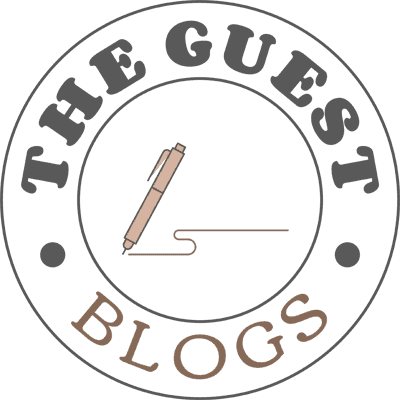The contemporary work environment is evolving rapidly due to technological advancements, changing employee identities, and evolving business requirements. Organizations need to develop comprehensive workforce planning strategies that align with their long-term goals to stay competitive. Organizations can offer total reward solutions for talent management to attract and retain employees while maintaining their engagement. This guide explores comprehensive workforce planning strategies to prepare your organization for employees of the future.
Understanding Workforce Planning
Workforce planning includes forecasting and managing an organization’s talent needs. Organizations use it to evaluate current employee competence and detect skill deficiencies before developing strategies so that the right people are in the right roles at the right time. Effective workforce planning analyzes internal and external elements like market trends, economic conditions together with technological advancements.
-
The Benefits of Workforce Planning
- Increased Talent Sourcing: Companies can actively source people with skills needed for long-term success.
- Better Employee Retention: A properly planned workforce prevents employees from feeling undervalued and disconnected.
- Cost Reduction: Avoids wasteful recruitment expenses and turnover costs.
- Business Flexibility: Allows companies to respond quickly to industry shifts and unexpected workforce issues.
Key Workforce Planning Strategies
-
Data-Driven Decision Making
Organizations must analyze data through analytics tools to predict workforce needs and determine future talent requirements for hiring decisions. Through workforce analytics, the HR department can discover employee operational performance together with staff engagement ratings and personnel departure outlooks. Through predictive analytics, organizations obtain the ability to predict workforce requirements while directing recruitment activities appropriately.
-
Skills Gap Analysis
Skills gap analysis ensures the identification of current employee competencies and future requirements. Measures of training, reskilling, and upskilling bridge such gaps and, therefore, prepare employees for the future. Employers are required to assess the skills of employees from time to time and offer learning plans aimed at filling skill gaps.
-
Succession Planning
Succession planning is about discovering and grooming internal talent to occupy important positions within the company. This anticipatory strategy reduces disruption due to retirements, resignations, or sudden vacancies. It also facilitates internal career advancement and maintains leadership continuity.
-
Flexible Workforce Models
Organizations need to explore hybrid work models and offer remote work flexibility as well as gig economy association in order to cater to evolving employee expectations. Flexible working arrangements enhance staff productivity and organizational capacity to attract talent from diverse backgrounds.
-
Employee Engagement & Retention Strategies
An engaged workforce is the driving force behind organizational success. Firms must develop a positive work environment, offer career growth opportunities, and institute competitive pay packages. Employee feedback on a regular basis, wellness programs, and reward schemes help in achieving increased retention rates and an engaged workforce.
Leveraging Technology in Workforce Planning
Modern HR technologies, such as AI-powered hiring software and staff management platforms, streamline talent procurement, induction, and retention functions. Streamlining constant HR tasks enhances effectiveness and enables HR managers to invest their time in key workforce planning programs. Virtual teamwork platforms also allow employees to work remotely and help increase workforce productivity.
The Role of Total Rewards in Workforce Planning
Workforce planning comes with a comprehensive reward and compensation strategy. An organization should develop a compensation system that includes salary structure, performance incentives, medical plan, and employee well-being programs. Competitive rewards also increase job satisfaction and talent retention. Non-monetary benefits such as training opportunities, flexible working arrangements, and psychological counseling schemes should also be considered by organizations in order to attract the best talent.
-
Components of a Strong Total Rewards Strategy:
- Compensation: Competitive salaries, bonuses, and incentives of equity.
- Benefits: Health care, retirement schemes, and leaves.
- Work-Life Balance: Flexible work options, remote work, and health promotion programs.
- Career Progression: Learning, guidance, and progression opportunities.
Best Practices for Future-Ready Workforce Planning
- Foster a Culture of Learning: Ongoing learning and growth programs make workers more relevant to their jobs.
- Invest in Leadership Development: Robust leadership pipelines provide organizational stability and succession readiness.
- Support Workplace Diversity and Inclusion: A diverse workforce creates innovation and strengthens decision-making.
- Improve Employee Experience: Engaging work experiences increase retention and productivity.
- Track Workforce Metrics: Analyze workforce data on an ongoing basis to spot trends and head off workforce issues before they become problems.
How to Onboard New Employees Effectively
A systematic onboarding process ensures that new employees settle well into the company. Here’s how to onboard a new employee:
- Pre-Boarding Preparation: The company offers new hires IT system installation along with documentation work in addition to handing over welcome packages.
- A Comprehensive Orientation Program: The program acquaints fundamental organizational values in addition to cultural expectations and mandatory norms.
- Assigning Mentors or Buddies: Continuous support and guidance are offered to new employees through this plan.
- Frequent Check-Ins: Workers are supposed to obtain answers to questions while being continually provided with feedback through learning throughout frequent check-ins.
- Integration within Company Culture: Encourages employee relationship formation and team creation among workers.
Future-Proof Your Workforce
Strategic workforce planning is required to establish an agile and strong organization. Executing decisions supported by data, utilizing HR technology, and developing a total rewards and compensation package can assist companies to last long in terms of business performance.
The focus on workforce planning will lead these organizations toward attaining superior skills, employee retention, and readiness to keep pace with changing markets. Professionals like Northcove Consulting can help you build a future-proof workforce.
Frequently Asked Questions
What are the key components of workforce planning?
Workforce planning involves finding talent and analyzing skill gaps while creating plans for employee succession and enhancing workforce engagement through data analysis.
How can technology improve workforce planning?
The implementation of HR technologies simplifies recruitment along with onboarding activities, performance management, and employee engagement, which improves workforce planning effectiveness. AI analytics provides forecasting capabilities about workforce patterns to support better organizational choices.
Why is skills gap analysis important in workforce planning?
Organizations need training programs that address future need assessments to eliminate competency gaps. Organizations that take a proactive approach ensure their team members possess relevant skills needed to fulfill professional challenges posed by evolving business needs.
What are the benefits of succession planning?
It offers leadership stability, prevents disruptions, and supports employee development initiatives. Succession planning also enhances internal career mobility and promotes long-term employee commitment.
How can businesses improve employee retention?
Offering opportunities for career growth, competitive wages, and an effective work environment are major techniques for retaining highly skilled workers. Giving employees periodic feedback, acknowledgment, and recognition alongside balancing work and personal life also enhances retention.






